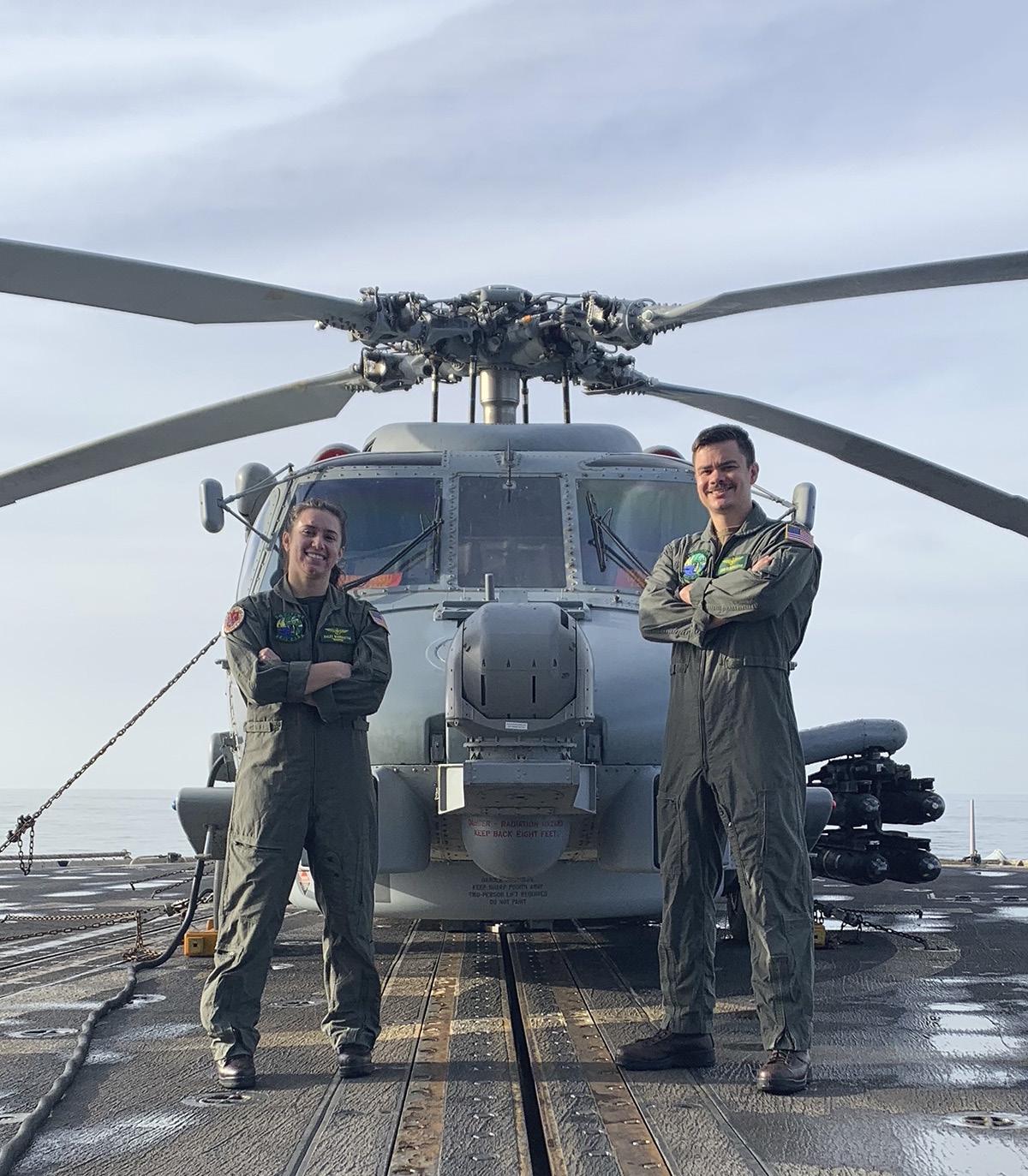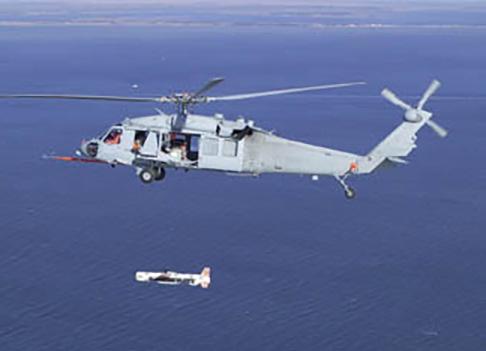View from the Labs A Perfect Storm
By CAPT George Galdorisi, USN (Ret.)
T
his issue of Rotor Review has as its theme, “UAVs and You.” Add to that the 2021 NHA Symposium theme of “Force of the Future” and we have a perfect storm to talk about how unmanned systems (UAVs among them, but also USVs and UUVs) will impact the Rotary Wing Community, as well as the Navy and DoD writ large. It is worth unpacking how we got to where we are today in order to understand how we can shape the future use of UxVs. Today one of the most rapidly growing areas of innovative technology adoption by the U.S. military involves unmanned systems. In the past several decades, the U.S. military’s use of unmanned aerial vehicles (UAVs) has increased from only a handful to more than 10,000, while the use of unmanned ground vehicles (UGVs) has exploded from zero to more than 12,000. The use of unmanned surface vehicles (USVs) and unmanned underwater vehicles (UUVs) is also growing, as USVs and UUVs are proving to be increasingly useful for a wide array of military applications. The expanding use of military unmanned systems (UxS or UxV) is already creating strategic, operational, and tactical possibilities that did not exist a decade ago. The expanding use of armed, unmanned systems is not only changing the face of modern warfare, but is also altering the process of decision-making in combat operations. Indeed, it has been argued that the rise in drone warfare is changing the way we conceive of and define “warfare" itself. These systems have been used extensively in the conflicts in Iraq and Afghanistan, and will continue to be equally relevant—if not more so—as the United States’ strategic focus shifts toward the Indo-AsiaPacific region and the high-end warfare this strategy requires. Unmanned system—and especially their utility, not as stand-alone entities, but as warfighters partners in what has been dubbed “man-machine-teaming”—is a foundational tenet of the United States “Third Offset Strategy.” The U.S. Navy is committed to integrating unmanned systems in the Fleet for a host of reasons. This is seen in the Navy’s official Force Structure Assessment, as well as in a series of “Future Fleet Architecture Studies.” In each of these studies, one by the Chief of Naval Operations Staff, one by the MITRE Corporation, and one by the Center for Strategic and Budgetary Assessments, the proposed Navy future Fleet architecture had large numbers of air, surface, and subsurface unmanned systems as part of the Navy force structure. America’s new maritime strategy, Advantage at Sea, reconfirms the Navy’s commitment to unmanned systems as an important part of the Sea Service’s assets, noting, in part, “Cost-effective platforms and manned-unmanned teaming will increase the capacity of the Fleet and expand our ability to distribute our forces…Naval forces will mix larger platforms with standoff capabilities and smaller, more-affordable platforms—including optionally manned or unmanned assets—that increase our offensive lethality and speed of maneuver.” In January 2021, the Chief of Naval Operations issued CNO NAVPLAN (Navigation Plan) designed to chart the course for how the Navy will execute the Tri-Service Maritime Strategy Advantage at Sea. Not surprisingly, this document identifies unmanned systems as an important part of the Navy’s future plans. Most recently, in March 2021, the Department of the Navy released its UNMANNED Campaign Framework describing the Service’s vision for integrating these platforms into the Fleet. That is the good news. The “other” news is that the Navy must deal with a U.S. Congress that has raised concerns that the Navy is moving forward too rapidly and buying too many unmanned systems before it comes up with solid concepts of operations for how it intends to actually use these platforms once they enter the Fleet. Here is how one analyst put it in an article in Defense News: "Unmanned surface vessels are all the rage in the office of the Secretary of Defense, and the U.S. Navy has lined up behind the effort. But Congress remains skeptical until it sees the Navy make progress on the basics." In the latest sign of Congressional ambivalence on unmanned surface warships, the House Seapower and Projection Forces Subcommittee called for restricting funding for procurement of any large unmanned surface vessels—LUSVs—until the Navy can certify it has worked out an appropriate hull, mechanical and electrical system and that it can operate autonomously for 30 days consecutively.
Rotor Review #153 Summer '21
18









































